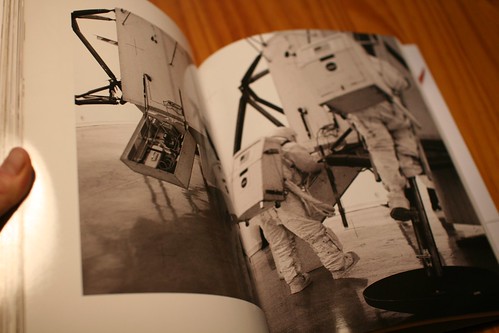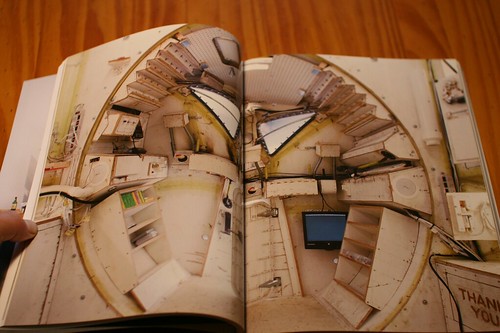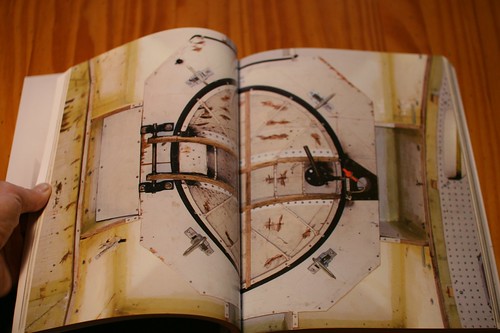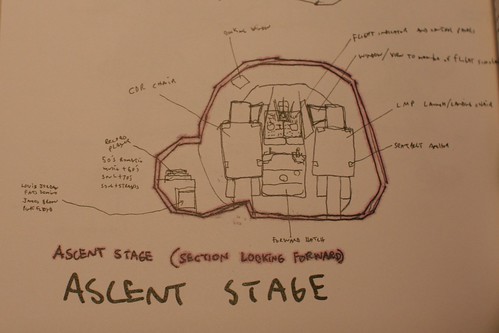 The book called "Space Program" by Tom Sachs stayed on my shelves for quite a while and I never went beyond flipping through it. A vague fever and the continuous fall of the snow gave me a good occasion to read the whole thing cover to cover... and it was a fascinating read.
The book called "Space Program" by Tom Sachs stayed on my shelves for quite a while and I never went beyond flipping through it. A vague fever and the continuous fall of the snow gave me a good occasion to read the whole thing cover to cover... and it was a fascinating read.
"Space Program" is first and foremost an art exhibit. It's based on the re-enactment of the Appolo program, in a peculiar way by Sachs and his team. The cornerstone of this oeuvre lies in the reconstruction of various devices, of which the most intriguing one is certainly a 1:1 model of the Lunar Module made of simple stuff-foamcore, hot glue and standard materials such as plywood. Given the importance of the performance, it's important to read the book in conjunction with the video of the Moon exploration designed by Sachs and the team.




What struck me as fascinating in this work is described by Sachs in an insightful discussion with Buzz Aldrin in the book. He basically highlights why, IMHO, his work is of interest and far more important than the being accumulation of weird pictures. The quote below shows the uniqueness of the process and how it leads to relevant design implications:
"Our space program is expensive, slow, and crappy... but that's why it's magic. In my studio, by building functional elements, by making systems really work, we create new problems that require even more work to solve. This compounded work process, with things built according to our strict code of love and haste, defines the look of what we do. So for us, going to the Moon is a physical armature for continuing to practice what we do.
I could argue that our is just as real, although it's maybe more theatrical and more representational (...) my sculptures are not just studies of "real things"; they are real things. Building a spaceship out of plywood creates some special problems that force unique solutions. It's in those solutions that the work has value to me."

Why do I blog this? As shown by Arthur Dento, in his introduction to Sach's book "the work is full of surprises, visual jokes and winks of complexity that are there to assure Sachs' viewers that he and they are on the same page, and that for all that he is a cultural critic". So, to me, this work exemplifies three important things:
- The strong capability of designed artifacts to support a critical viewpoint about human culture: the commodification of space, NASA policies, the role of technologies, etc.,
- The magic of DIY/bricolage and how actually doing something lead to constraints which force to invent original solutions,
- The very notion of design fiction. Personally, I read less and less Space Opera but this kind of book makes more curious and passionate about issues which used to be address in SciFi literature... which are now addressed by designers and artists with their own means of expressions.